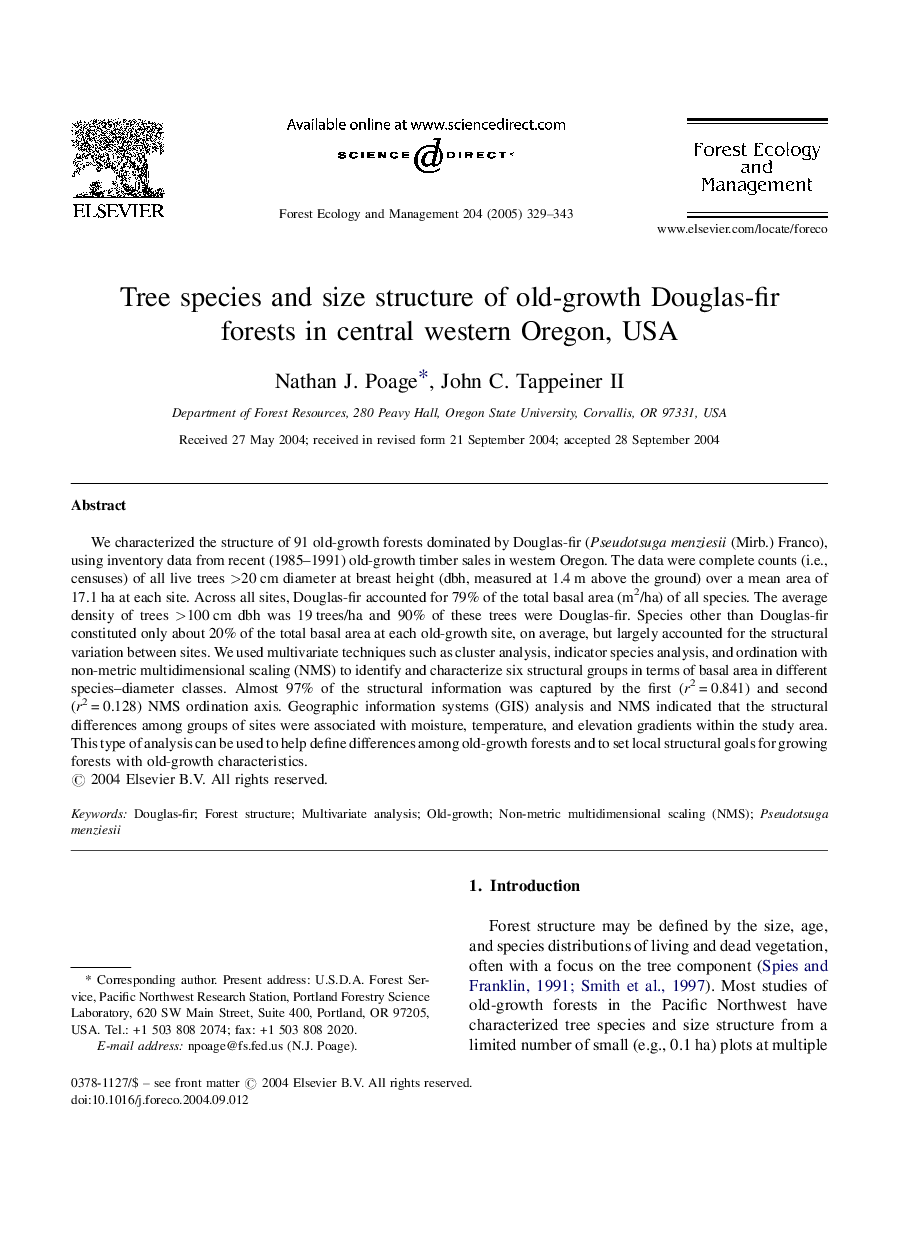| کد مقاله | کد نشریه | سال انتشار | مقاله انگلیسی | نسخه تمام متن |
|---|---|---|---|---|
| 9620536 | 159443 | 2005 | 15 صفحه PDF | دانلود رایگان |
عنوان انگلیسی مقاله ISI
Tree species and size structure of old-growth Douglas-fir forests in central western Oregon, USA
دانلود مقاله + سفارش ترجمه
دانلود مقاله ISI انگلیسی
رایگان برای ایرانیان
کلمات کلیدی
موضوعات مرتبط
علوم زیستی و بیوفناوری
علوم کشاورزی و بیولوژیک
بوم شناسی، تکامل، رفتار و سامانه شناسی
پیش نمایش صفحه اول مقاله

چکیده انگلیسی
We characterized the structure of 91 old-growth forests dominated by Douglas-fir (Pseudotsuga menziesii (Mirb.) Franco), using inventory data from recent (1985-1991) old-growth timber sales in western Oregon. The data were complete counts (i.e., censuses) of all live trees >20Â cm diameter at breast height (dbh, measured at 1.4Â m above the ground) over a mean area of 17.1Â ha at each site. Across all sites, Douglas-fir accounted for 79% of the total basal area (m2/ha) of all species. The average density of trees >100Â cm dbh was 19Â trees/ha and 90% of these trees were Douglas-fir. Species other than Douglas-fir constituted only about 20% of the total basal area at each old-growth site, on average, but largely accounted for the structural variation between sites. We used multivariate techniques such as cluster analysis, indicator species analysis, and ordination with non-metric multidimensional scaling (NMS) to identify and characterize six structural groups in terms of basal area in different species-diameter classes. Almost 97% of the structural information was captured by the first (r2Â =Â 0.841) and second (r2Â =Â 0.128) NMS ordination axis. Geographic information systems (GIS) analysis and NMS indicated that the structural differences among groups of sites were associated with moisture, temperature, and elevation gradients within the study area. This type of analysis can be used to help define differences among old-growth forests and to set local structural goals for growing forests with old-growth characteristics.
ناشر
Database: Elsevier - ScienceDirect (ساینس دایرکت)
Journal: Forest Ecology and Management - Volume 204, Issues 2â3, 17 January 2005, Pages 329-343
Journal: Forest Ecology and Management - Volume 204, Issues 2â3, 17 January 2005, Pages 329-343
نویسندگان
Nathan J. Poage, John C. II,